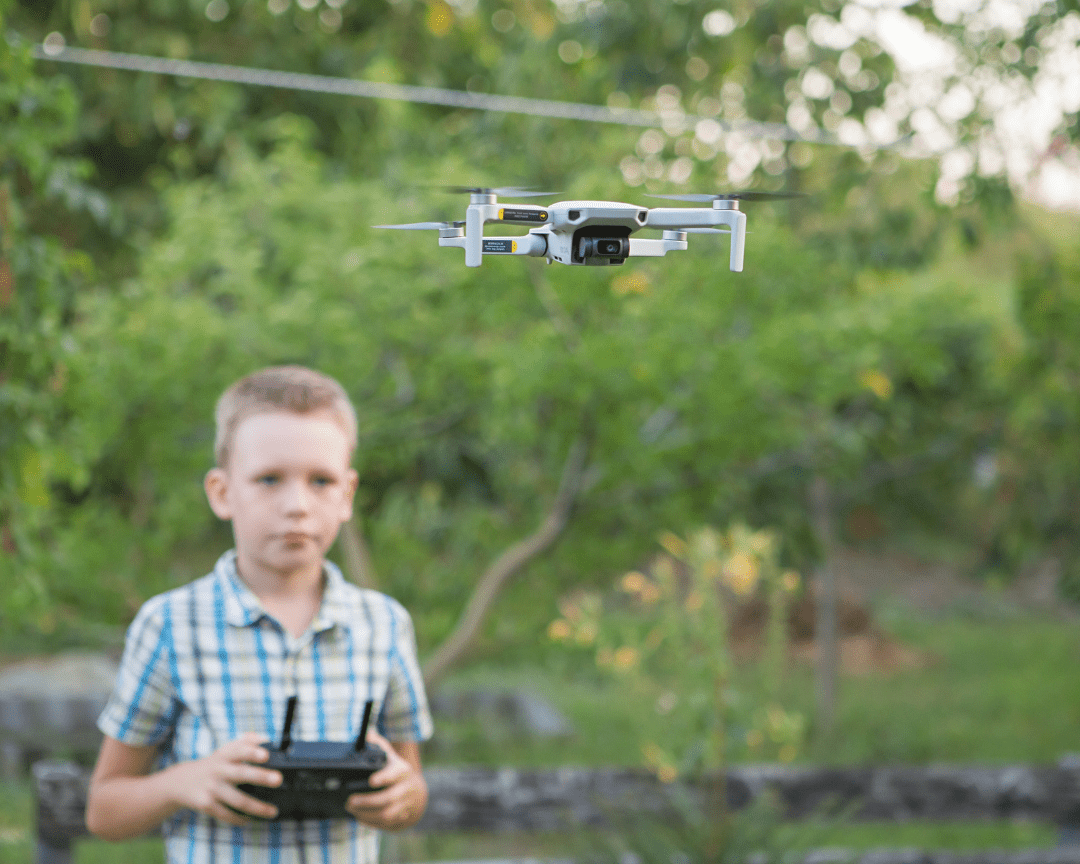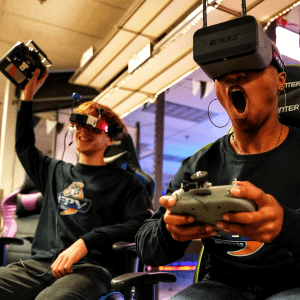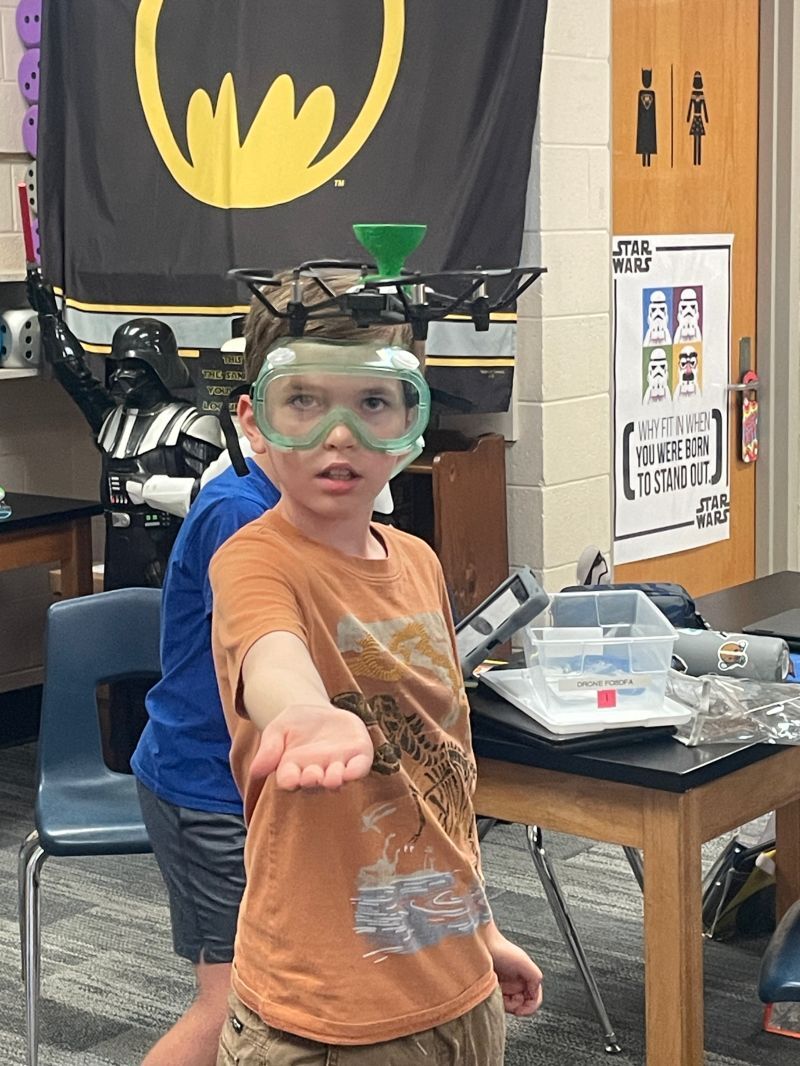Drone hobbyists know how safe most recreational drones can be— as long as they are used responsibly. Parents who are unfamiliar with drones, however, might think an uncrewed vehicle (UAV) isn’t the safest thing in the world. And they’re right: although drones are extremely fun, they do require some safety precautions and spatial awareness.
Wondering if there are recreational drones safe for kids to use? Keep reading.
How Safe are Drones?
Drone flying, like any other hobby, comes with potential risks. Some people misuse drones, causing damage to property, people, or wildlife. But when piloted safely and responsibly, drones are safe enough for kids and teens to enjoy.
Here are the main risks that come up when you give your kid a drone:
- Crash landings
- Collisions
- Injuries from propellers
- Legal penalties (if the drone needs to be registered)
- Flying through or over crowds (never do that)
- Interference with aircraft
- Bystander privacy
- Losing or breaking the drone
Luckily, all of these risks can be prevented with the right understanding of drones.
How to Make Sure Drones are Safe for Your Kids
Are drones safe for kids? Some parents assume drones are not safe for entertainment. But the fact is, one of the primary reasons people use drones is for fun— and kids love drones.
Other forms of kid entertainment that aren’t perfectly safe include running on the playground, learning a new sport, and even browsing the internet. Safety begins with situational awareness, decent parenting, and age-appropriate activity. The same is true for drone flying.
If you think your kid would love learning to fly a drone, be excited! It’s a great hobby that can teach kids excellent life skills. Here’s what you need to know beforehand.
Know the Rules
Even if it’s for recreational purposes, any drone that weighs .55 pounds (250g) or more must be registered online with the FAA. Drone registration and FAA safety is important, even for fun kid drones.
Registration costs about $5 and is easy to do. The FAA simply needs to know you’re aware of the rules and regulations before you fly. Don’t avoid registration. You could be fined thousands of dollars if you’re caught without your drone registration in public.
If you don’t want to deal with FAA regulations, get your child a small, lightweight drone under .55 pounds. However, you should still know the basic knowledge test questions. You can even get TRUST certified if you want.
Locate Places to Fly Drones Safely
Knowing where to safely fly drones is just as important as knowing how. For small drones, mini-drones, or handheld drones, it’s generally safe to fly indoors. Make sure to remove dangerous obstacles, expensive breakables, and anything that can get tangled in drone propellers. And always tie up long hair.
When flying outdoors, always check that areas aren’t listed as “no drone zones”. Never fly over crowds of people, emergency response zones, private property (unless it’s yours), or federal land.
You can usually fly drones in your backyard, a friend’s backyard, and in many local parks. When flying outdoors at schools, make sure you know the county’s laws first— some educational campuses are considered sensitive areas.
Other “maybe” areas to fly include above piers, lakes, national forest areas (not national parks), and neighborhoods where local drone restrictions aren’t in place.
Learn How to Fly a Drone With Your Child
If you don’t know how to fly a drone— even if it’s a basic mini-drone or a beginner’s quadcopter— you and your child are likely to run into some frustration when flying doesn’t come naturally at the beginning.
Knowing how to control, troubleshoot, and repair inevitable drone flights and crash landings is a great idea to help your kids learn through their mistakes.
Start With an Age-Appropriate Drone
Find a drone that suits your child’s abilities and maturity level. You probably don’t want to give a five-year-old a $2,000 DJI Mavic camera drone with advanced controls. Start with something like a Ryze Tello Mini Drone that’s lightweight, easy to maneuver, and has replaceable propellers.
Read the Drone Legend’s recommended list of the best drones for kids here.
Encourage Responsible Drone Piloting
Don’t just hand your kid a drone and leave them to their own devices. Use it as a learning experience. Learning to pilot a drone gives kids a chance to build responsibility, courtesy, critical thinking, teamwork, and character development. Not to mention, drones are a great tool for introducing kids to STEM (science, technology, engineering, and math) concepts.
Be Patient
You don’t want to give up too early when helping your child learn to use a drone. You also don’t want to rush them to get it right on their first day of trying. Patience is essential for learning, especially when there’s a little trial and error required.
Look for a Local Drone Program
Every kid is different. Some may catch on to drone piloting right away. Others might need a little assistance from an educator. Some may even learn so rapidly that they want more of a challenge, having the ability to incorporate newer technology. In any case, it might be helpful to enroll your child in a drone education program.
Safe and Fun Drone Education for Kids
If you need a little help teaching your kids how to fly drones safely while still having a lot of fun, look into some drone programs.
Many drone curriculums today offer easy, guided drone piloting instruction for total beginners. Some even come packed full of applicable STEM lessons, which is a bonus.
At Drone Legends, we talk with parents and educators all day long about the importance of drone safety for kids who want to learn. To get a good look at one of the best drone education options for your kids, check out our drone resources here.




